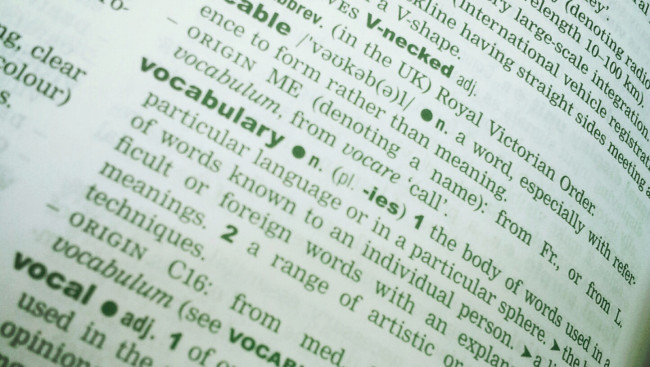04.03.15On Vocabulary: What is a ‘Tier One’ Word?

Bringing Words to Life is a landmark book for me and many other educators on the topic of vocabulary instruction. It’s hard to say what the three most important ideas in it are because there are so many, but one of the most widely discussed in Beck, McKeown and Kucan’s discussion is how to choose which vocabulary words to teach.
They divide words into three groups:
Tier 1 words occur frequently in everyday life. Such words generally are not worth teaching explicitly, as they will be absorbed via continued natural exposure, Beck argues.
Tier 3 words consist of technical vocabulary specific to a certain domain or discipline. They are subject-specific and highly specialized. ‘Filibuster’ is fine to teach you are a history teacher but English/ Language Arts teachers should not focus on such words, Beck argues, because it’s better to focus on words that appear more frequently in a wide array of contexts.
Tier 2 words, then, are the place to focus. These are, as Daisy Christodoulou describes it in this post, ‘words that occur across a range of domains, are characteristic of written texts and occur less frequently in oral language.’
This notion of teaching Tier 2 words is pretty common among the schools I work with–there are a lot of us Beck acolytes out there. But I also feel like there are some very simple, very persistent challenges implicit in executing the idea. For example when watching trainings or reading blog posts, I often see teachers present a very simplistic group of words as being typical of Tier 1. For example even Daisy Christodoulou, who is one of my heroes, uses this list of typical Tier 1 words in her post: warm, dog, tired, party, walk.
The problem with that list is that the words in it are so simple that they are not actually words teachers would use in vocabulary lessons and so, as a result, our conception of Tier 1 words eliminates nothing, and we are left with a vision of words to teach that is merely Tier 2 and Tier 3– technical vocabulary and everything else.
I was discussing this with Maggie Johnson and Colleen Driggs the other day because we are developing a Plug and Play workshop on vocabulary (coming out soon!), and we set out to develop a list of Tier 1 words that were words teachers would actually teach in vocabulary lessons but that were in fact too simple. We came up with words like “communication” and “situation.”
Then this morning, I read this really useful post on vocabulary from Katie Ashford, who’s an English teacher and the Director of Inclusion at Michaela Community School in London. The whole post is outstanding but Katie defines Tier 2 words in a way that’s slightly different from what I’ve seen elsewhere, and the difference is very useful. “The words that will have the biggest impact on a child’s vocabulary are words that you see often in books, but hear rarely in speech. Words such as: derive, evoke, surreptitious, capricious, incredulous and eradicate all fall into this category.” This strikes me as an incredibly useful and simple way to decide if a word is Tier 1 or Tier 2. “Communicate” and “situation” are much more complex than “dog” or “walk.” They are long, for example, and the definition might be fairly nuanced. But they are still Tier 1 words in my opinion because they occur all the time in common speech, and so most students know enough about them to be functional. They are not as useful to teach as a word like “derive” or “eradicate” because the latter more readily lend themselves to better reading comprehension.
Anyway, Katie’s framing of Tier 1 caused me a moment of clarity, and I now think I have a definition that I can use to exclude words teachers might teach as vocabulary on the grounds that they are Tier 1.

I’m a volunteer math tutor, and in the last few weeks the words “occurrence” and “equivalent” tripped up my students in word problems. It strikes me that they might be on the line between Tier 1 and Tier 2. Is the dividing line different for students who are not always speaking English at home?
How can I find a list of the words in each tier to incorporate these into my lessons and make sure the students are successful in using them?
I think there’s an error in the link to Ms. Ashford’s blog. The quote comes from this page: https://tabularasaeducation.wordpress.com/2015/04/03/vocab/, while the link points to a commentary on grammar.